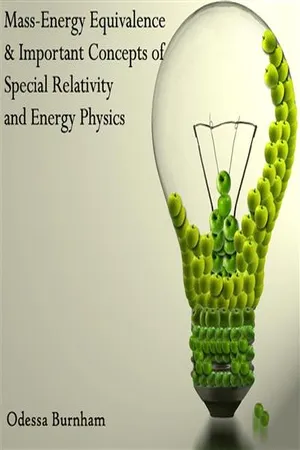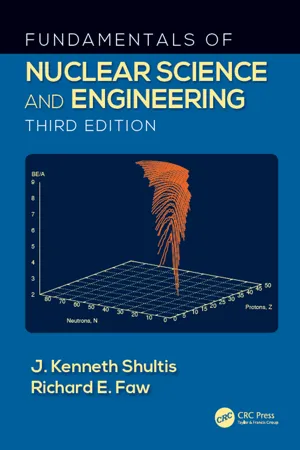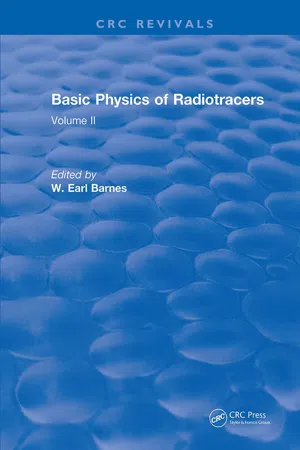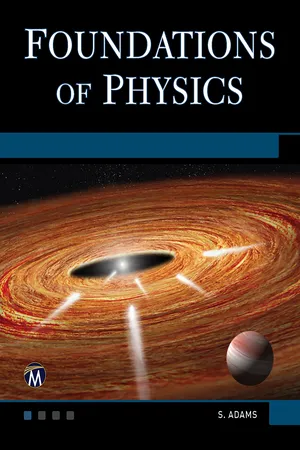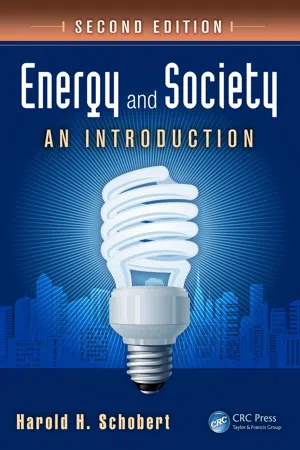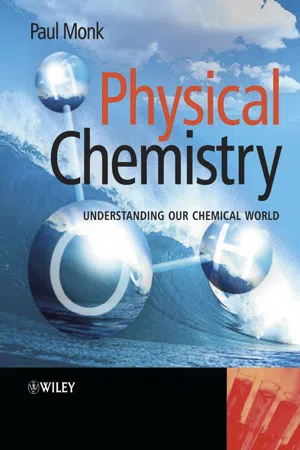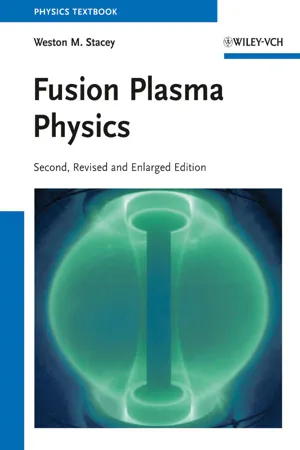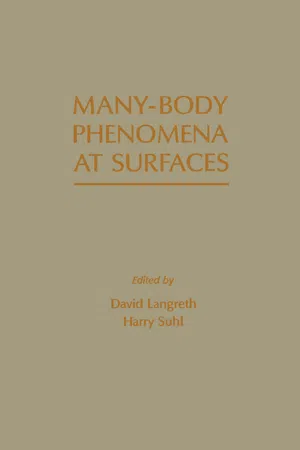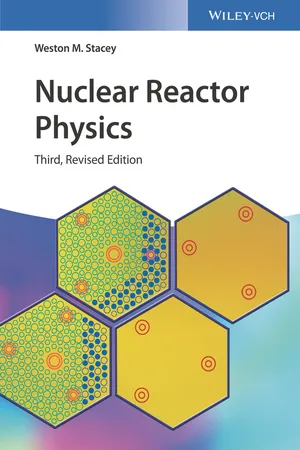Physics
Binding Energy
Binding energy is the energy required to disassemble a system into its constituent parts. In the context of atomic physics, it refers to the energy required to break apart an atomic nucleus into its individual protons and neutrons. This concept is important in understanding the stability and structure of atomic nuclei and is crucial in nuclear physics and chemistry.
Written by Perlego with AI-assistance
Related key terms
1 of 5
10 Key excerpts on "Binding Energy"
- No longer available |Learn more
- (Author)
- 2014(Publication Date)
- Learning Press(Publisher)
________________________ WORLD TECHNOLOGIES ________________________ Chapter- 2 Binding Energy and Kinetic Energy Binding Energy Binding Energy is the mechanical energy required to disassemble a whole into separate parts. A bound system typically has a lower potential energy than its constituent parts; this is what keeps the system together- often this means that energy is released upon the creation of a bound state. The usual convention is that this corresponds to a positive Binding Energy. ________________________ WORLD TECHNOLOGIES ________________________ In general, Binding Energy represents the mechanical work which must be done against the forces which hold an object together, disassembling the object into component parts separated by sufficient distance that further separation requires negligible additional work. At the atomic level the atomic Binding Energy of the atom derives from electromagnetic interaction and is the energy required to disassemble an atom into free electrons and a nucleus. Electron Binding Energy is a measure of the energy required to free electrons from their atomic orbits. This is more commonly known as ionisation energy. At the nuclear level, Binding Energy is also equivalent to the energy liberated when a nucleus is created from other nucleons or nuclei. This nuclear Binding Energy (Binding Energy of nucleons into a nuclide) is derived from the strong nuclear force and is the energy required to disassemble a nucleus into the same number of free unbound neutrons and protons it is composed of, so that the nucleons are far/distant enough from each other so that the strong nuclear force can no longer cause the particles to interact. In astrophysics, gravitational Binding Energy of a celestial body is the energy required to expand the material to infinity. - eBook - ePub
- J. Kenneth Shultis, Richard E. Faw(Authors)
- 2016(Publication Date)
- CRC Press(Publisher)
C has a lower potential energy than its constituent parts. This is what keeps the system together. The usual convention is that this corresponds to a positive Binding Energy, denoting an exothermic reaction.As in any reaction, the BE arises because of a change in the mass of the reactants. The mass defect ΔM is defined as the difference between the sum of initial masses and the sum of the final masses. HereΔ M =[− mass C .mass A + mass B + ⋯](4.7) The Binding Energy can then be computed as BE = ΔM c2 , provided the masses of the reactants are known with sufficient accuracy.A more precise, if more restrictive, meaning of Binding Energy is the nuclear Binding Energy. Then, for the reaction in Eq. 4.6 the energy emitted is given by the nuclear Binding Energy of the product C less the sum of the binding energies of reactants A and B.4.1.1 Nuclear and Atomic MassesFirst some notation: The rest mass of an atom is denoted byMwhile that of its nucleus is denoted by()Z AXm. A few frequently used symbols are also used for convenience: the neutron rest mass()Z AX, the proton rest massm n≡ m()0 1n, and the electron rest massm p≡ m()1 1H. NOTE: the data in Appendix B are for the atomic rest massesm e≡ m()e− 10Mof all the known isotopes, not the nuclear masses.()Z AXAn atom ofis formed by combining Z electrons with its nucleus to form the neutral atom. As these electrons bind to the nucleus, energy is emitted equal to the Binding Energy BEZ AXZeof the electrons. To remove all the electrons from the atom would thus require an ionization energy of BEZe. This electron Binding Energy comes from a decrease in the mass of the atom compared to the sum of nuclear and electron masses, by an amount BEZe/c2 . Thus, atomic and nuclear masses are related byM(= m)Z AX(+ Z)Z AXm e−.BEZ ec 2(4.8) The Binding Energy term in this relation is often neglected since it is always very small compared to the other terms. For example, it requires 13.6 eV to ionize the hydrogen atom. This electron Binding Energy represents a mass change of BE1e/c2 = 13.6 (eV)/9.315 × 108 (eV/u) = 1.4 × 10−8 u. This mass change is negligible compared to the mass of the hydrogen atom and nucleus (each about 1 u) and even the electron (about 5.5 × 10−4 - eBook - PDF
Basic Physics Of Radiotracers
Volume II
- Earl W. Barnes(Author)
- 2017(Publication Date)
- CRC Press(Publisher)
B. Binding Energy The Binding Energy of the nucleus is an especially revealing quantity, providing im portant information about nuclear forces and structure. Nuclear Binding Energy is the energy required to completely dissociate the nucleus into free nucleons. Because of the equivalence of energy and mass, Binding Energy is manifested as a reduction in the mass of the nucleons when assembled. Calling the mass of a free proton m p and of a free neutron m n, we have for the Binding Energy of a nucleus where ÍM is the mass of the nucleus having Z protons and N = A — Z neutrons. Measurements of nuclear binding energies reveal the following general trends: 1. To an approximation, B is proportional to the number of nucleons A, the pro portionality constant being about 8 MeV. This fact suggests that each nucleon interacts with only a limited number of others so that the Binding Energy per nucleon is independent of the total number of nucleons. Something similar occurs in liquids where each atom is bound to only a few neighbors. A pursuance of this analogy has led to a simple model of the nucleus called the liquid drop model. The Binding Energy of the nucleus is considered to be due to both volume and surface effects. If every nucleon were completely surrounded by neighbors, as it is within the interior of the nucleus, the nuclear Binding Energy would be strictly nronortional to A: The magnitude of the proportionality constant a, is presumably related to the strength of the internucleon forces and to the maximum number of neighbors with which a nucleon can interact. 2. However, a nucleon at the surface of the nucleus has neighbors on only one side, suggesting that a correction term is needed which is negative and proportional to the number of nucleons at the surface. This number is proportional to the nuclear surface area or to A 2/3. Thus we have3 3. For high-A nuclides, the Binding Energy per nucleon is found to fall. - No longer available |Learn more
- Steve Adams(Author)
- 2019(Publication Date)
- Mercury Learning and Information(Publisher)
26Nuclear Physics26.1 Nuclear Energy ChangesNucleons inside nuclei are in bound states. This means that their total energy is negative and work would have to be done to separate them. The work that must be done is called the Binding Energy (B.E.) of the nucleus. Note that this is not energy in the nucleus, it is energy that must be supplied to break it apart or that would be released if the nucleus formed from separate nucleons. When nuclear transformations such as radioactive decay, nuclear fission or nuclear fusion occur, the total B.E. of the system changes and energy can be released, e.g., in the form of kinetic energy of the products of reaction. Einstein’s mass–energy relationship, E = mc2 , links these energy changes to mass changes.26.1.1 Nuclear Binding EnergyThe B.E. of a nucleus is equal to the work that must be done to separate all of the nucleons in the nucleus so that they are no longer interacting. In theory, this would mean separating them to infinite distances but the strong nuclear force that binds them together is extremely short range and effectively falls to zero at distances greater than a few times 10−15 m:The energy of a nucleon is lower when it is inside the nucleus than when it is a free particle so its mass is also lower. The total mass of a nucleus is therefore less than the sum of the rest masses of the free nucleons from which it is made. The difference in mass between the mass of the free nucleons and the mass of the nucleus is called the mass defect Δm for the nucleus. The B.E. of the nucleus is equal to the mass defect multiplied by the speed of light squared.When carrying out calculations of nuclear B.E. it is important to use nuclear mass and not atomic mass. Most tables of data give atomic masses so the mass of Z electrons must be subtracted from this. The data below has been used to calculate the B.E. and B.E. per nucleon of an oxygen-16 nucleus. - Axel Kleidon(Author)
- 2016(Publication Date)
- Cambridge University Press(Publisher)
Kinetic energy is typically generated out of differences in potential energy that in turn relate to differential heating and cooling, as described earlier. When kinetic energy is dissipated by friction, it is converted back into thermal energy or can perform further work. 2.3.6 Binding Energy Binding Energy summarizes several forms of energy that are involved in phenomena dealing with intermolecular binding forces that are involved in different phases of a substance, like liquid water or ice, the binding of liquid water to the soil matrix by adhesive and capillary forces, or surface tension of water droplets (in which case the energy can be referred to as a surface energy). In contrast to the vapor state, water molecules in their liquid state are bound to each other by hydrogen bonds. The energy associated with this intermolecular binding is described by a chemical potential μ and the number of particles, N, where the chemical potential is defined by the change in Binding Energy when a small amount of particles is added or removed. As the number of particles is related to mass, with the conversion given by the molar mass of the substance, this form of energy can also be formulated in terms of the chemical potential and mass, m. The potential energy described in Section 2.3.4. can also be seen as a form of Binding Energy, for which the chemical potential corresponds to the geopotential, μ = φ (Kondepudi and Prigogine 1998). Also, dissolved substances can be described by this form of energy, with the chemical potential corresponding to the osmotic potential and the form of energy referred to as an osmotic energy. For instance, the energy associated with dissolved minerals 34 Energy and entropy in water is described by this form. The osmotic potential then depends on the concentration of the dissolved substance. We refer to these forms of energy as Binding Energy here.- eBook - PDF
Energy and Society
An Introduction, Second Edition
- Harold H. Schobert(Author)
- 2014(Publication Date)
- CRC Press(Publisher)
In the curve of Binding Energy, stability increases as we go up the curve. Therefore, High nuclear potential energy represents low Binding Energy; and low nuclear potential energy is a high Binding Energy. The Binding Energy per nucleon indicates the stability of a nucleus. The higher the Binding Energy, the more stable the nucleus. Nuclear processes release far Known nuclei fall in this region 40 25 50 75 100 80 120 160 Line for equal numbers of protons and neutrons Number of neutrons Number of protons FIGURE 23.7 In small nuclei, the numbers of protons and neutrons are about equal, but in larger nuclei, neutrons dominate. 393 Atomic Energy more energy per reaction than do chemical processes because the “glue” holding nuclei together is much more powerful than is the electric force that binds electrons to their atoms. The Binding Energy of a nucleus is the energy needed to take the nucleus apart into its constituent nucleons. In small nuclei with low atomic numbers, the nuclear Binding Energy over-whelms the repulsive force and the nucleons are tightly bound together. The rising slope of the Binding Energy curve for small nuclei tells us that the average Binding Energy of the nucleons would increase even if these nuclei had more protons and neutrons than they already do. At the exact crest of the curve of nuclear Binding Energy, for nuclei with 26 protons, the nuclear Binding Energy and the electrical repulsive force are well balanced. Such nuclei are extremely stable. For these nuclei, there is no increase in the average Binding Energy of their nucleons by adding or subtracting nucleons. In contrast to the situation for small nuclei, the situation is reversed for nuclei with many protons: electrical repulsion now overwhelms Binding Energy. For these large nuclei, the nuclear Binding Energy cannot hold the nucleus together. Rather, these large nuclei break apart in the process of radioactivity (also called radioactive decay). - eBook - PDF
Physical Chemistry
Understanding our Chemical World
- Paul M. S. Monk(Author)
- 2005(Publication Date)
- Wiley(Publisher)
cipal ways (or ‘modes’). First, energy is locked within the atomic nuclei. The only way to release it is to split the nucleus, as hap- pens in atomic weapons and nuclear power stations to yield nuclear energy. The changes in energy caused by splitting nuclei are mas- sive. We will briefly mention nuclear energy in Chapter 8, but the topic will not be discussed otherwise. It is too rare for most physical chemists to consider further. This second way in which energy is locked away is within chem- ical bonds. We call this form of energy the chemical energy, which is the subject of this chapter. Chemical energies are smaller than nuclear energies. And third, energy is possessed by virtue of the potential energy, and the translational, vibrational, rotational energy states of the atoms and bonds within the substance, be it atomic, molecular or ionic. The energy within each of these states is quantized, and will be discussed in greater detail in Chapter 9 within the subject of spectroscopy. These energies are normally much smaller than the energies of chemical bonds. As thermodynamicists, we generally study the second of these Strictly, the bonds are held together with ‘outer-shell’ electrons. modes of energy change, following the breaking and formation of bonds (which are held together with electrons ), although we occa- sionally consider potential energy. The magnitude of the chemical energy will change during a reaction, i.e. while altering the number and/or nature of the bonds in a chemical. We give the name calorimetry to the study of energy changes occurring during bond changes. INTRODUCTION TO THERMODYNAMICS: INTERNAL ENERGY 79 Chemists need to understand the physical chemistry underlying Placing the Greek letter (Delta) before the symbol for a parameter such as U indicates the change in U while passing from an initial to a final state. We define the change in a parameter X as X = X (final state) − X (initial state) . - eBook - ePub
- Weston M. Stacey(Author)
- 2012(Publication Date)
- Wiley-VCH(Publisher)
Fig. 1.1 .Any process which results in nuclides being converted to other nuclides with more Binding Energy per nucleon will result in the conversion of mass into energy. The combination of low A -nuclides to form higher A -nuclides with a larger BE/A is the basis for the fusion process for the release of nuclear energy. The splitting of very high A -nuclides to form intermediate A -nuclides with a larger BE/A is the basis of the fission process for the release of nuclear energy.The fusion of two light nuclei to form a compound nucleus in an excited state that then decays into reaction products, with an attendant conversion of mass into kinetic energy, is represented schematically by(1.2)The mass difference(1.3)is converted into kinetic energy according to Einstein’s celebrated formula(1.4)Figure 1.1 . Binding Energy per nucleonIn order for the fusion reaction to take place, the two nuclei must overcome the longrange Coulomb repulsion force and approach sufficiently close that the short-range nuclear attraction forces can lead to the formation of a compound nucleus. From the observation that hydrogen, deuterium, helium, and so on, do not fuse spontaneously under normal conditions, we conclude that the electrostatic repulsion between positively charged nuclei prevents nuclei approaching each other sufficiently close for the short-range attractive nuclear forces to become dominant. For fusion to occur as a result of random encounters between atomic nuclei, the nuclei must be made sufficiently energetic to overcome the Coulomb repulsive force. We will see that energies of the order of 10 keV to 100 keV are required, which corresponds to temperatures of 108 K to 109 - eBook - PDF
- David Lengreth(Author)
- 2012(Publication Date)
- Academic Press(Publisher)
This reveals a funda-mental relationship between the metallic and molecular bond and between metallic bonds in a variety of situations. A knowledge that there is a kind of universality allows one to make simple relationships between observables. We have found that cohesive energies can be simply correlated to sur-face energies as well as to melting temperatures. Equations of state as well as linear expansion coefficients can be ob-tained from the equilibrium values of cohesive energy, bulk modulus and lattice constant. Adatom vibrational frequencies and desorption energies are related simply, as are diatomic harmonic terms. This simplicity of nature that is revealed by the discovery of universal Binding Energy relations has not been fully probed. There are a number of other inter-relationships be-tween observables which can be made. It also remains to ex-plain why universal behavior exists. Perhaps such an explana-tion would be the most important or illuminating result that could be garnered from the discovery of universality in Binding Energy relations. ACKNOWLEDGMENTS This material is based upon research supported in part by the National Science Foundation under Grant No. PHY77-27084 supplemented by funds from the National Aeronautics and Space Administration. Binding Energy as a Function of Interatomic Spacing 173 REFERENCES 1. A. Einstein, Annalen der Physik (Leipzig) No. 4, p. 513 (1901); ibid., No. 8, p. 798 (1902). 2. P.M. Morse, Phys. Rev. 34, 57 (1929). 3. R. Rydberg, Z. Physik 73, 376 (1931). 4. G. Simons, R.G. Parr, and J.M. Finlan, J. Chem. Phys. 59, 3229 (1970). 5. See, e.g., V. Heine and D. Weaire, Solid State Phys. _24, 277 (1970). 6. John Ferrante, John R. Smith, and James H. Rose, Phys. Rev. Lett. 50, 1385 (1983). 7. J.H. Rose, John Ferrante, and John R. Smith, Phys. Rev. Lett. 47 , 675 (1981) . 8. John Ferrante and John R. Smith, Bull. Am. Phys. Soc. 26, 428 (1981); ibid., Phys. Rev. Β 19, 3911 (1979). 9. W. Kohn and L.J. Sham, Phys. - eBook - ePub
- Weston M. Stacey(Author)
- 2018(Publication Date)
- Wiley-VCH(Publisher)
1 Neutron–Nuclear ReactionsThe physics of nuclear reactors is determined by the transport of neutrons and their interaction with matter within a reactor. The basic neutron nucleus reactions of importance in nuclear reactors and the nuclear data used in reactor physics calculations are described in this chapter.1.1 Neutron-Induced Nuclear Fission
Stable Nuclides
Short-range attractive nuclear forces acting among nucleons (neutrons and protons) are stronger than the Coulomb repulsive forces acting among protons at distances on the order of the nuclear radius (R ≈ 1.25 × 10−13 A1/3cm) in a stable nucleus. These forces are such that the ratio of the atomic mass A (the number of neutrons plus protons) to the atomic number Z (the number of protons) increases with Z; in other words, the stable nuclides become increasingly neutron-rich with increasing Z, as illustrated in Fig. 1.1 . The various nuclear species are referred to as nuclides, and nuclides with the same atomic number are referred to as isotopes of the element corresponding to Z. We use the notation (e.g., ) to identify nuclides.Nuclear stability curve. (With permission from Ref. [1]. Copyright 1996, McGraw-Hill.)Fig. 1.1Binding Energy
The actual mass of an atomic nucleus is not the sum of the masses (mp) of the Z protons and the masses (mn) of A − Z neutrons of which it is composed. The stable nuclides have a mass defect:(1.1)This mass defect is conceptually thought of as having been converted to energy (E = Δc2 ) at the time that the nucleus was formed, putting the nucleus into a negative energy state. The amount of externally supplied energy that would have to be converted to mass in disassembling a nucleus into its separate nucleons is known as the Binding Energy of the nucleus, BE = Δc2 . The Binding Energy per nucleon (BE/A) is shown in Fig. 1.2 .Fig. 1.2
Index pages curate the most relevant extracts from our library of academic textbooks. They’ve been created using an in-house natural language model (NLM), each adding context and meaning to key research topics.
